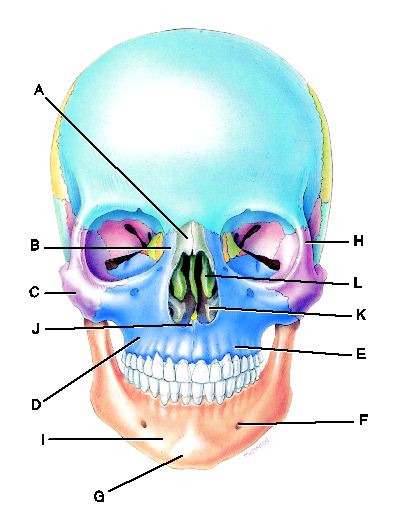Identify the following

A. Nasal bone
B. Frontal process
C. Zygomatic bone
D. Maxilla
E. Alveolar process
F. Mental foramen
G. Symphysis menti
H. Frontal process of zygomatic bone
I. Mandible
J. Anterior nasal spine
K. Inferior nasal concha
L. Middle nasal concha
You might also like to view...
What is the function of epinephrine and norepinephrine?
A. Prepare the body for emergency situations and prolong fight-or-flight response B. Regulate blood volume and blood pressure C. Stimulate synthesis of glycogen for long-term energy reserves D. Regulate blood calcium levels E. Block target cell receptors to prevent binding of secondary hormones
The ________ canal includes the mouth, pharynx, esophagus, stomach, small intestine, large intestine, and anal canal.
Fill in the blank(s) with the appropriate word(s).
Which of the following statements concerning parasympathetic innervation of the digestive tract is incorrect?
a. in general, parasympathetic stimulation is excitatory to the digestive system. b. parasympathetic innervation to the digestive tract comes primarily through the vagus nerve. c. parasympathetic innervation is part of the extrinsic nerve supply to the digestive tract. d. parasympathetic stimulation of the salivary glands produces a saliva rich in mucus. e. parasympathetic stimulation increases salivary, gastric, pancreatic, and biliary secretion.
Which test tube had the highest lipase activity?
A) tube 3 B) tube 1 C) tube 2 D) tube 4